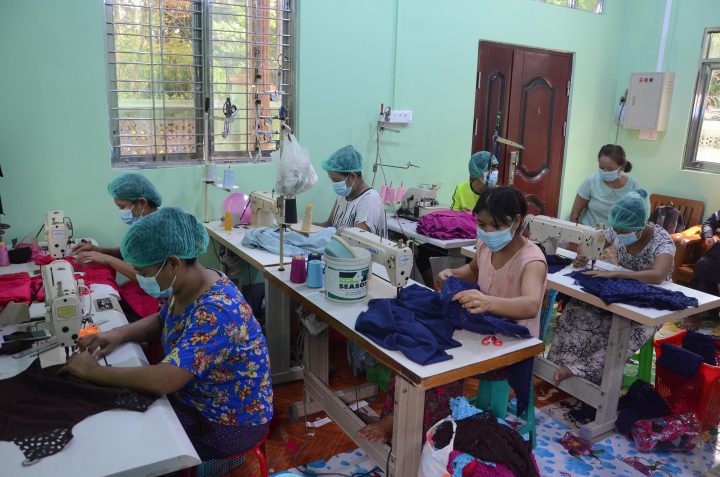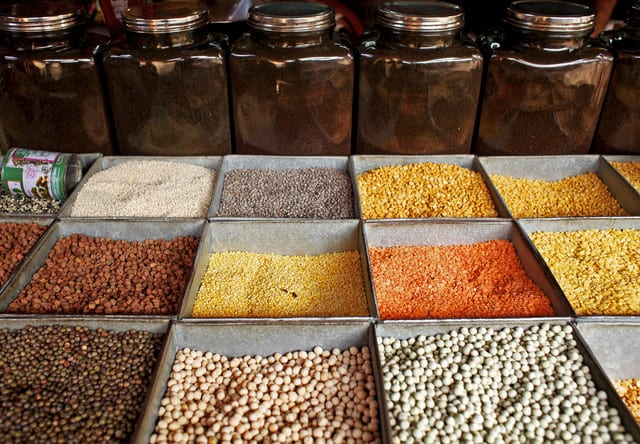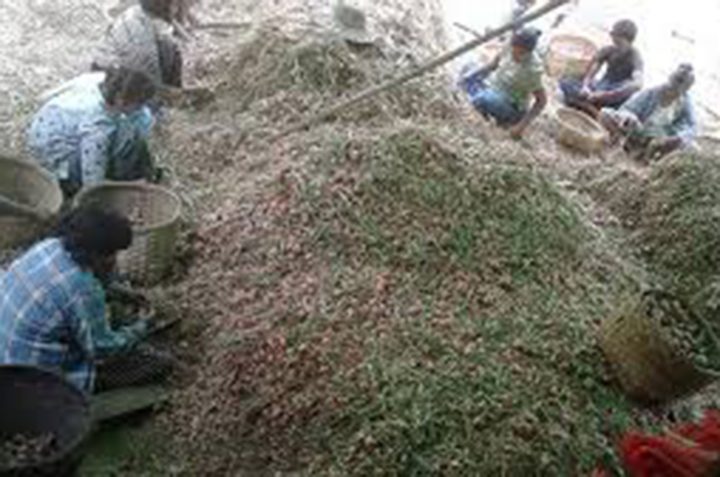![]() — หน้าแรก — เกาะติดข่าว
— หน้าแรก — เกาะติดข่าว
ข่าวเศรษฐกิจและธุรกิจประจำสัปดาห์
-

Myanmar’s cross border trade with China exceeded USD $ 5.26 billion in the 11 months of the current 2019 – 2020 financial year
Myanmar’s border trade with China saw a decrease of US$ 188 million between 1 October last year and late August this current financial year, according to the statistics from the Ministry of Commerce. The border trade between Myanmar and China through five border checkpoints was over US$5.26 billion in the current budget year, which plunged from US$5.45 billion recorded in the corresponding period of last year, the ministry’s figures showed. The border trade between Myanmar and China reached US$4.35 billion through Muse, US$128.6 million via Lwejel, US$491.83 million via Chinshwehaw, US$279.86 million via Kampaiti, and over US$ 4.94 million via Kengtung. The ministry’s data showed a slight drop in trade value via all border trade camps between Myanmar and China, except Chinshwehaw. A large portion of Myanmar’s overland trade with China goes through Muse border. China has been stepping up border control measures to curb the spread of the deadly coronavirus infection. Due to an import ban on rice, sugar and maize, and the ongoing coronavirus pandemic, the border trade volume between Myanmar and China has been declined when compared to previous years. -

The domestic and foreign enterprises created about 200,000 jobs in the past eleven months of current 2019 – 2020 financial year
The domestic and foreign enterprises permitted and endorsed by the Myanmar Investment Commission (MIC) and other regional and state investment committees created about 200,000 jobs in the past 11 months of the 2019-2020 financial year, according to the Directorate of Investment and Company Administration (DICA). During the October-August period, the foreign enterprises created over 176,000 jobs for locals, adding the recruitment of the existing foreign enterprises, as per data from the DICA. Additionally, the domestic enterprises under the Myanmar Investment Commission created over 21,000 jobs for local people in the past 11 months, including the increase in employment by the existing enterprises. Moreover, the domestic and foreign businesses employed about 5,000 expatriate workers in Myanmar. -

The annual inflation rate in Myanmar stands 7.14 percent in July 2020 which fall when compared to the same period of previous year
The annual rate of inflation in Myanmar, based on the Consumer Price Index, stood at 7.14 per cent in July 2020, according to a report released by the Central Statistical Organization, under the Ministry of Planning, Finance and Industry. The US dollar against Kyat weakened in July, with a fall of K24 than the previous month. However, the gold price significantly rose in July on the back of global cues. Similarly, the imported oil price went up against June’s rate, causing truck fares and food price to slightly increase. Nevertheless, there was a remarkable increase in CPI for the food group, household goods and maintenance, other commodities, clothing, health, education services, tobacco and beverages, recreation, culture and non-food. The price of telecommunications dropped. -

Domestic tourism companies and tour guides had shifted to other business since tourism business had to stopped in the wake of COVID – 19 outbreak in the country
Myanmar Tourism Operators Association Chairman Naung Naung Han said that domestic tourism companies had to shift to other businesses such as the food industry since almost all tourism businesses had to be stopped in the wake of COVID-19 outbreak in the country. COVID-19 positive cases are surging in Myanmar and domestic airlines and express bus services are suspended at present. -

Foreign investment flows into the Special Economic Zone (SEZ) raked USD $ 1.34 billion over the four years under the incumbent government
Foreign investments of US$1.348 billion have flowed into the Special Economic Zones (SEZs), under the Special Economic Zone Law, over the four years under the incumbent government, according to the figures released by the Directorate of Investment and Company Administration (DICA). Between 2016-2017 financial year and as of July-end in the 2019-2020FY, 58 enterprises from 17 countries have ploughed in $1.348 billion, including $12 million valued domestic investments by existing businesses, the DICA’s statistics indicated. -

Mastercard launched it’s a Central Bank Digital Currencies (CBDCs) testing platform to assess coming national digital currencies
Mastercard launched it’s a Central Bank Digital Currencies (CBDCs) testing platform to assess coming national digital currencies -

The CMP raw material imports plunged to USD $ 1.99 billion in the past eleven months beginning in October in the 2019 – 2020 financial year
Imports of raw materials by CMP businesses have been valued at US$1.99 billion in the past eleven months beginning in October in the 2019-2020 financial year, which plunged from $2.148 billion registered in the corresponding period of last fiscal, according to the Ministry of Commerce. Myanmar’s manufacturing sector is concentrated mainly in garment and textiles produced on the Cutting, Making, and Packing basis, and it contributes to the country’s GDP to a certain extent. At present, some CMP garment factories have shut down on the reason for the lack of raw materials due to the COVID-19 negative impacts, leaving thousands of workers unemployed. Covid-19 badly battered the labour-intensive enterprises, said an official of the Directorate of Investment and Company Administration. -

Foreign Direct Investment (FDI) flows into Thilawa Special Economic Zone (SEZ) drop USD $ 79 million when compared to the same period of previous year
Foreign Direct Investment (FDI) of US$142 million has flowed into Thilawa Special Economic Zone (SEZ) in the past 11 months of this financial year, which is a drop by $79 million compared to that of last year, according to the figures released by the Directorate of Investment and Company Administration (DICA). According to the DICA statistics, six foreign enterprises have been granted permits and endorsements between 1 October and 28 August in the current FY, bringing in the capital of $142.297 million. During the same period of the last financial year of 2018-2019, MIC gave the green light to 16 FDIs and endorsements, and it has ploughed $221.430 million. -

Myanmar government are fining the ways to go for Myanmar’s beans and pulses industry in quota from India and finding the new markets
In recent years, the Myanmar bean and pulses industry often suffers from the impact of import policy changes by India, the biggest buyer of Myanmar’s beans and pulses, and whose production is on the rise. Years when crop productivity is strong, India lowers import to protect local farmers, which is a reasonable move for India. However, bean and pulses growers from Myanmar, who heavily depends on the Indian market for bean and pulses export, have to bear low prices. Thus, Myanmar authorities are trying to find a way to secure the demand for farmers such as trying to have more quota from India and finding new markets. “India has helped Myanmar and tries to take in as much as possible in spite of the fact that the Indian crops being a large one. Going forward, I think there are three solutions,” Mr. Vatsal Lilani, the president of Overseas Agro Traders Association, told Myanmar Business Today. -

The onion growers are experiencing the loss due to the bulk supply amidst COVID – 19 resurgence
The onion growers, as well as traders, are experiencing market fallouts due to the surging COVID-19 cases. As a result of this, workers engaged in onion depots are suffering financial hardship, said a depot owner from Mandalay. At present, there is a steady demand for China. The onions are highly yielded this year. If there is no external market beyond China, it might hurt the growers and traders. “Earlier, onions were highly demanded by Bangladesh, India and China. Now, the trade with Bangladesh and India is halted to contain the spread of the coronavirus. That’s why the price is on the decline,” said onion depot owner from Mandalay. “The prevailing prices of onions range between 400-550 per viss (a viss equals to 1.6 kg) in the domestic market depending on the size and quality. The market is regular during June and July. The growers will undoubtedly suffer a loss if the onions cannot be exported to Bangladesh and India. Indeed, the onions will be stockpiled in the market,” said a grower. Last year, Bangladesh’s demand for Myanmar’s onions coupled with high demand in the local market hiked up prices, soaring up to K4,000 per viss on 15 November 2019, according to the Mandalay commodity depot. The high demand by foreign markets and a remarkable rise in price prompted the growers to expand the onion cultivation.
เกาะติดข่าว
Copyright © 2014 Business Information Center All Rights Reserved.







